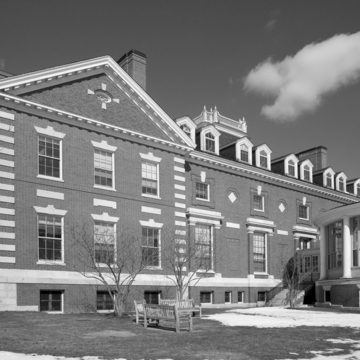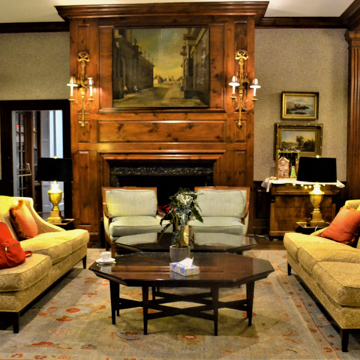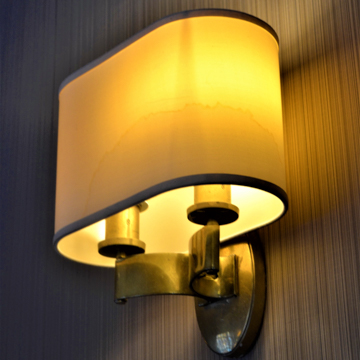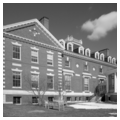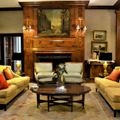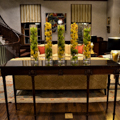Recognizing the social needs of Harvard's less wealthy students, who could not afford club memberships, Henry Lee Higginson contributed funding for the Harvard Union (1900–1902, NR), designed by Charles W. McKim of McKim, Mead and White. Higginson was the founder and a leading benefactor of the Boston Symphony Orchestra, whose new home (see FL6) also was designed by McKim, Mead and White. Higginson promoted McKim for projects at Harvard. The Union building is Georgian Revival, but unlike Harvard's original eighteenth-century buildings, it is ornate and English in its elegance and more animated in the contrast of limestone quoining and columns with red brick base. When Goody, Clancy and Associates rebuilt it in 1995–1996, preservationists debated the changes. Transformed into the Barker Center for the Humanities, its interior spaces have been substantially diminished.
The adjacent Dana-Palmer House (1822, NR) was the object of an earlier preservation controversy. The Federal house, with a Greek Revival porch, originally was located on the other side of Quincy Street. Purchased by Harvard in 1835, the structure was rebuilt four years later as the college's first observatory. When its site was selected for Lamont Library (see HY19) in 1946, the house seemed doomed to be demolished. Protests were respected, however, and the following year, it
Recessed between the Dana-Palmer House and the Carpenter Center (HY17) stands the Harvard Faculty Club (1930), yet another handsome Georgian Revival design by Coolidge, Shepley, Bulfinch and Abbott. Suggesting a residential scale, the two-story brick structure with limestone trim turns its short side to the street with an entrance from a terrace along its south facade. Here in 1940 was founded the Society of Architectural Historians, sponsors of the Buildings of the United States series.















